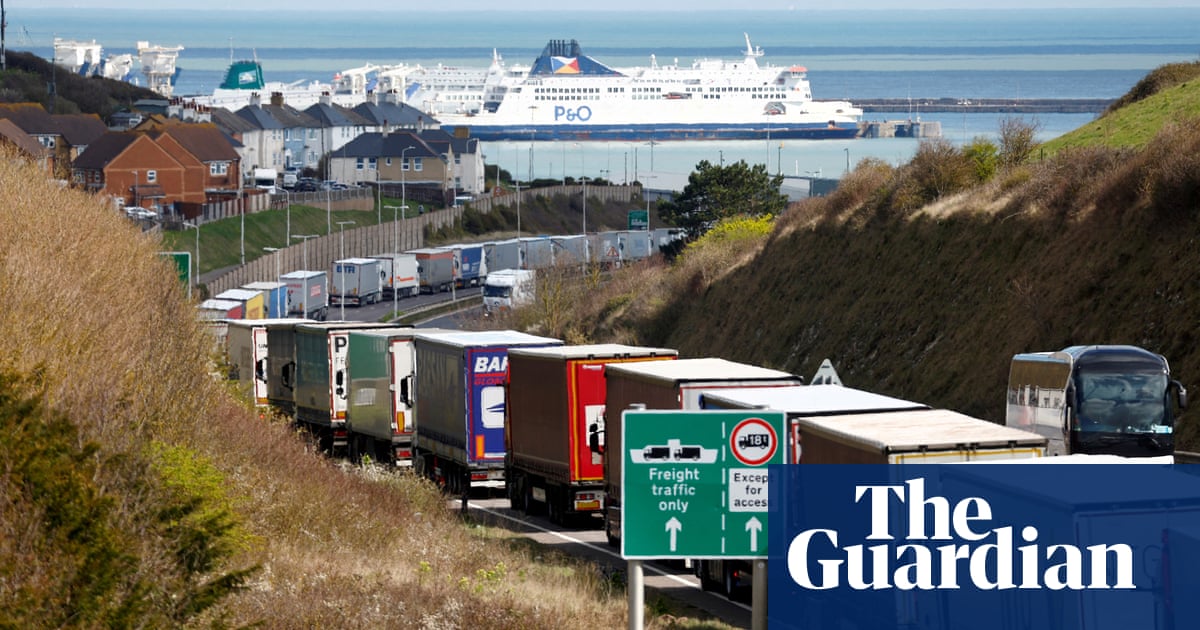
Brexit-supporting regions in the UK are becoming increasingly dependent on the EU for their manufacturing exports, research by the trade body Make UK has found.
The report, based on quarterly manufacturing outlook data measuring performance in output, orders, employment and investment intentions, also found the EU remains the “overwhelmingly dominant” destination for UK manufacturing exports.
Analysis of 2021 data by the business advisory firm BDO shows that 49% of British exports go to the 27-nation bloc.
Northern Ireland, which voted against Brexit but has access to the single market courtesy of the Northern Ireland protocol, is most heavily reliant on the EU, with 63% of all exports going across the border to the Republic of Ireland and the continent.
Some of the UK regions that voted for Brexit registered the biggest increases in the share of their manufacturing exports that went to the EU.
For Wales, the figure increased from 58% to 60% between 2020 and 2021, north-east England reported a rise from 56% to 58%, the east Midlands was up from 48% to 51% and the east of England rose from 46% to 48%.
Wales is second most reliant on the EU for exports of goods overall, followed by north-east England and Yorkshire and Humber.
“Despite the talk of global Britain, history shows that geography is always the main determinant of trade,” said Verity Davidge, the director of policy at Make UK.
“The EU was always going to remain the main destination for manufacturers who appear to [be] becoming more, not less, dependent on it as a market,” she added.
The trade body has called on the government to recognise the importance of European markets and to re-establish the Brexit support fund for small and medium-sized businesses, alongside other targeted schemes to help manufacturers respond to post-Brexit barriers including customs, export certification and standards compliance.
It has also urged the government to come to an agreement with the EU over the Northern Ireland protocol and avert a potential trade war.
Boris Johnson and Liz Truss, who is the third favourite to become new prime minister in the Tory leadership race, tabled legislation last month to tear up parts of the protocol, which the EU has warned could lead to tariffs being imposed on a range of British goods.
The Regional Manufacturing Outlook 2022 report found that manufacturing conditions improved across all regions and measures, reflecting a bounceback from the pandemic, founded on an “above normal” response from consumers to the reopening of the economy.
More recently, figures show continued growth in the first half of this year with more manufacturers expanding between the third quarter of 2021 and the second quarter of 2022 .
However it warns of a potential plateau as supply issues and energy price increases put a squeeze on manufacturing and consumer demand.
“This period [the last year] may come to be seen as good as it gets for manufacturers for some time to come given how fast economic conditions are now weakening in major markets,” says the report.
The north-east emerged as the top performer for growth in manufacturing, reflecting demand in pharmaceuticals and chemicals. The report warns that the region may also be vulnerable to a slowdown in performance as it is unlikely to repeat the “explosive growth” seen in pharma as a result of the pandemic.
The south-west reported the weakest balance for orders and investment intentions, while Wales, home to Airbus and a large farming sector, reported the weakest average performance for output and employment growth.
Wales was also the second most reliant on the EU market for exports after Northern Ireland, with 60% of all its goods exported to the EU.












